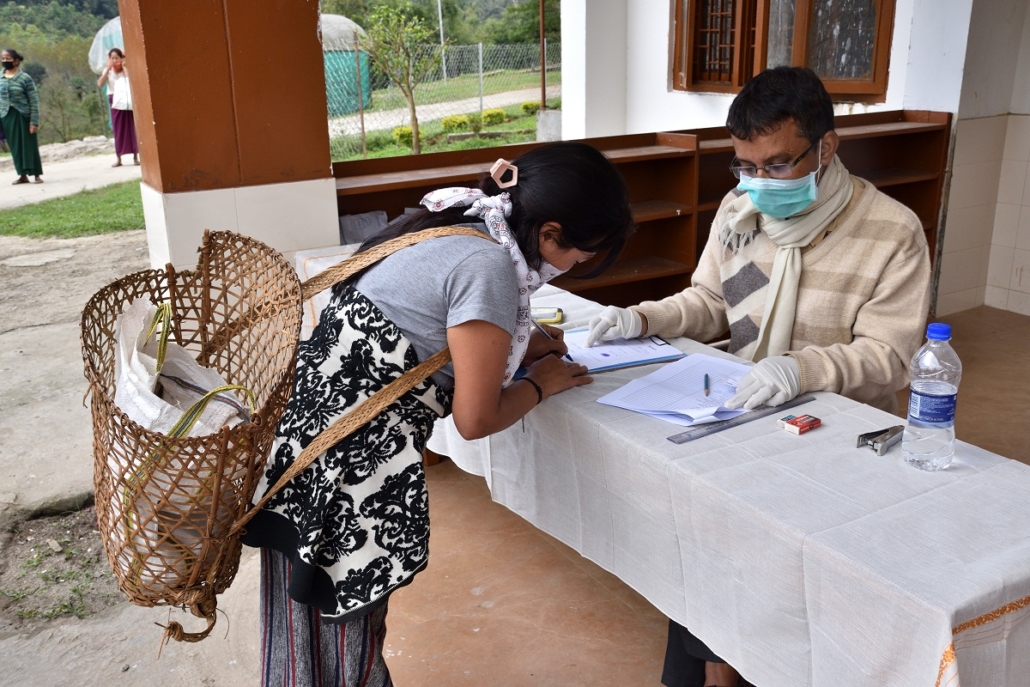The World Bank’s Crisis Response to the COVID-19 Pandemic

In early October 2020, the president of the World Bank Group (WBG) gave a speech to address the COVID-19 pandemic and the World Bank’s crisis response. In his speech, WBG president David Malpass discussed the enormous toll that the COVID-19 pandemic has had on developing countries. He also stated that the World Bank’s response would focus on alleviating poverty, inequality and debt burdens, and support educational and health opportunities.
Disparities
Dramatically uneven access to Personal Protective Equipment (PPE) across the globe is one indication of global disparities in economic well-being, which in turn have affected pandemic response capabilities. Lowering the transmission of COVID-19 requires the coordination of a globalized response. However, localized country-wide challenges in securing PPE, the most basic of pandemic safety necessities, prevent this possibility.
Illustrating this challenge is the fact that low-income countries have little economic agency to act during the global pandemic. Developed countries may face shortages in supplies of PPE. Those countries may even opt to reduce the supply of outgoing PPE sales in order to remediate domestic shortages. However, restrictive budgets, few local manufacturers and no way to import PPE exacerbate shortages in developing countries.
A 2020 National Institute of Health study estimated that if countries tightened up sales of PPEs, “export restrictions could initially increase prices of medical masks by 20.5%, Venturi masks by 9.1%, and protective equipment, such as aprons and gloves by 1% and 2% respectively” around the globe. Illustrating the problem, a recent survey of seven low-income developing countries across the world showed that on average, clinics and health centers were only able to supply two of four necessary PPE items to medical staff. The challenges presented by PPE distribution demonstrate the importance of the World Bank Group’s aid programs around the world.
Dual Challenges
Lockdown guidelines that have successfully “flattened the curve” in developed nations are not always a viable option for developing economies. For example, in India, nearly 90% of the workforce is in the informal employment sector. In sub-Saharan Africa, 86% of workers have informal employment. The nature of informal work requires workers to leave the house for work and as a consequence, choose between keeping their families fed or respecting lockdowns. Countries that struggle to lower transmission rates or offset the financial damage of lockdowns see dual challenges. Implementing measures that “flatten the curve” and lower transmission rates cause economic harm. On the other hand, failing to reduce hospitalizations inflicts strain on medical systems, leading to high infection rates and death tolls.
“A Fire That Must Be Put Out”
In the World Bank Group’s June 2020 COVID-19 Crisis Response Approach Paper, the ongoing COVID-19 crisis is described as “a fire that must be put out.” As a direct result of the pandemic, for the first time in 60 years, the World Bank projected that Emerging Markets and Developing Economies (EMDEs) will see economic contraction. The global economy will likely shrink by 5.2% in 2020, the deepest recession since World War II. For comparison, the global economy shrank less than 2% during the 2009 financial crisis. A number of traits cause EMDEs to be especially vulnerable to the pandemic’s negative economic impacts. Traits such as weaker health systems, dependence on global trade and tourism exacerbate financial instability. For the first time in decades, global poverty will rise.
The World Bank Group’s Response
Despite challenges, international financial institutions, including the WBG, are moving quickly to prevent the loss of hard-won development growth in EMDEs. The WBG has recognized the new paradigm of the pandemic and as an organization, has shifted its focus to a crisis response agenda. In April of 2020, the WBG announced the first projects directly related to COVID-19 and prepared to deploy up to $160 billion over a period of 15 months to address COVID-19.
Like other international organizations, the World Bank’s crisis response to COVID-19 aims to focus on issues directly related to the pandemic. However, the WBG ensures a continuation of its broader development objectives by placing its COVID-19 crisis response agenda within its own Twin Goals. Adopted in 2013, its Twin Goals are to bring extreme poverty down and to promote prosperity among the bottom sector of every country. The WBG’s massive $160 billion project rollout focuses on direct response to COVID-19, and on protecting past economic development gains. This includes maintaining steady progress towards the Twin Goals.
The World Bank’s current crisis response agenda can be divided into near, medium and long-term agendas. These agendas are termed relief, restructuring and resilient recovery. Relief relates to dealing with the most direct impacts of COVID-19. Its restructuring plans include strengthening health systems, restoring human capital and restructuring social and economic sectors. Resilient recovery is about building a future in recognition of a changed post-pandemic world. In pursuing these plans, the WBG ultimately aims to assist at least one billion people affected by the pandemic.
– Marshall Wu
Photo: Flickr
